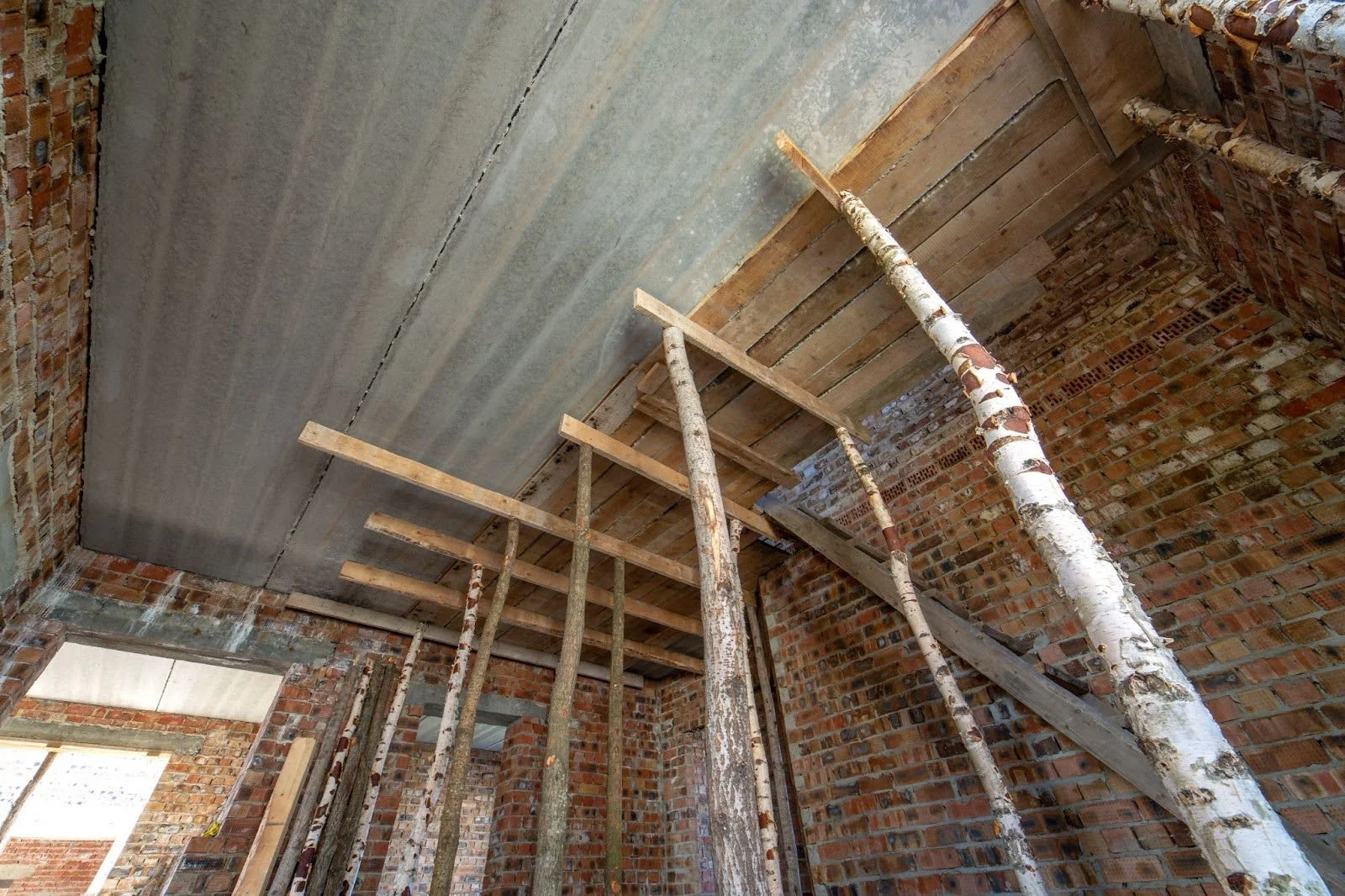What to Know About Structural Remodels
What to Know About Structural Remodels
For project owners, maintaining their investment is their top priority. At times, a structural remodel may be necessary to ensure the longevity of their commercial building.
A commercial structural remodel is quite different than one for home remodeling. The stakes are higher, and the structures are much larger.
What do you need to know about commercial structural remodels?
This article will discuss what a structural remodel is, what it entails, its benefits, and possible setbacks.
What is a Structural Remodel?
A structural remodel is a project that involves making major changes to a building's structural elements to increase its structural integrity.
Structural vs. Cosmetic Remodel
What is the difference between a structural and cosmetic remodel?
Structural remodels involve replacing an existing structure’s skeletal elements to improve the functionality of the entire building. On the other hand, cosmetic remodels involve upgrading a structure’s aesthetics through interior design or an exterior makeover.
A few other terms also need to be differentiated. For example, what is the difference between structural maintenance, renovations, and remodeling?
Maintenance includes the cleaning and minor repairs needed for building upkeep.
Renovations typically include cosmetic updates like painting and light fixtures.
Structural remodels involve major structural or design changes to a building.
Benefits of Structural Remodeling
As expected, structural remodeling takes a significant amount of time, money, and energy, so why would a commercial business take on this large endeavor?
Structural remodeling is beneficial and sometimes necessary to the integrity of the building itself.
Here are the four top benefits that come with a structural remodel:
Sustainability
Investing in a structural remodel for your commercial building comes with the benefit of increasing its sustainability.
Improving the structural integrity of your current building—instead of tearing it down and starting all over again—reduces the need for new construction and all the associated manufacturing and raw materials. It also reduces the wasted material that ends up in the landfill from demolishing your old building.
Additionally, a structural remodel helps strengthen the building envelope and frame, enabling it to withstand severe weather. It can also make it possible to install sustainable water and energy consumption processes.
Resale Value
Through the structural remodeling process, you increase the value of your property. Just like a homeowner would do kitchen or bathroom remodeling to increase the value of their home, a structural remodel is worth the investment when it comes time to sell.
Energy-Efficiency
Depending on the extent of your structural remodel, it could make your building much more energy-efficient.
The remodel could include adding layers of protection against heat or cold to reduce the HVAC system's energy consumption. Also, using new materials on the market or updated building methods can upgrade the efficiency of your structure. Installation of alternative energy technology is often part of a commercial structural remodel, too.
Space Optimization
Structural renovation projects could add or remove walls to the surface level to meet the new needs of the business. Adding a second story to expand your working space could also be an option.
Types of Structural Remodels
Many commercial companies invest in structural remodels during the lifetime of their buildings. However, not all perform the same type of remodel or have the same objectives.
There are four main types of structural remodels that benefit commercial structures. Many times, however, the extent a structural remodel includes more than one of the following types.
Foundational Remodel
When the foundation of a structure is damaged or weak, immediate action needs to be taken. A faulty foundation can cause an onslaught of resulting negative effects, including:
More structural damage, like cracks in the walls, floors, and ceilings
Water damage from water seeping in through the damaged foundation
Safety issues from uneven floors and gaps resulting in trips or falls
Potential entry points for pests
Decreased property value
Decreased ability to withstand earthquakes and other severe weather
More extensive and expensive repairs in the future
Understandably, foundational remodels are well worth the investment needed to complete.
Load-Bearing Support Remodel
When the load-bearing elements of a commercial structure (such as load-bearing walls, columns, or beams) are damaged or weak, the building structure is also weak.
For this reason, many companies elect to perform a complete load-bearing support remodel.
Roofing Renovations
Roofs suffer extensive damage from rain, snow, and UV rays. Reinforcing a weak roof is a vital part of a structural remodel.
Roofing renovations may also be needed to alter rooflines. A roofline alteration may be considered for aesthetics or branding purposes.
However, more often than not, a roofline is altered to improve functionality. This may include:
Improving drainage
Preventing leaks
Creating more usable space in a loft or mezzanine
Accommodating new HVAC systems
Improving ventilation or insulation
Enabling the addition of solar panels or green roofs
Floorplan Restructure
At times, a structural remodel isn’t to bolster a building's structural integrity, but to improve its floor plan to meet the business's needs.
Many businesses remove unnecessary walls when transitioning to a more open concept. Of course, the opposite is also true. If spatial separation is needed, walls may be added.
Ramps, elevators, and other accessibility upgrades may be needed to meet current local building codes.
When the building has reached its full space potential and still doesn’t meet the business's sizing needs, an addition to the current structure may be built for more room.
A floorplan restructure may be necessary to provide access or accommodate the flow from the old space into the addition built on.
Structural Remodel Potential Issues
While most structural remodels are very beneficial, some unexpected issues can arise during the remodeling process. It’s important to be aware of these so that you can be prepared with a potential solution.
Cracking to Walls, Floors, or Foundation
New additions or changing load-bearing supports could cause existing elements to buckle or crack. If this happens, the structural remodel will expand to include repairing these damages.
Asbestos and Lead
Older buildings can contain dangerous materials such as asbestos and lead paint, which can cause lung cancer, lead poisoning, or mesothelioma.
If these are found during a remodel, remediation will be needed, which is no simple process.
Remediation must be done by a certified professional. They will inspect the area to determine the extent of the chemical’s presence and assess the risk to determine whether it will need to be removed or encapsulated.
After remediation, the area must be fully cleaned following EPA and OSHA protocols. A final inspection has to be done before the structure is cleared for occupancy.
Demolition Revealing More Issues
Removal of drywall or other surfaces during demolition can reveal corrosion in steel beams, crumbling concrete, or water damage that must be repaired.
Demolition can also show structural elements that must be removed to accommodate the proposed construction design of the remodel.
If these structural elements can’t be removed due to their supporting role, the design needs to be altered.
Pest Infestation
Another unpleasant discovery that can come during demolition is a pest infestation.
This will require fumigation and other costly measures to rid the building of these critters. Depending on the type of infestation, they may cause structural damage or an unhealthy interior environment if left uncontrolled.
Updated MEPS Needed
Older buildings that undergo structural remodeling can be in serious need of system upgrades.
Outdated Electrical System
Older electrical infrastructures may not meet current safety standards, efficiency requirements, or capacity needs.
Things like aluminum wiring, a lack of ground wiring, or insufficient amperage will require a total rewiring of the area to support the load, meet the code, and reduce the risk of electrical shock or fires.
HVAC Deficiencies
Commercial structures require powerful HVAC systems, and multiple units necessitate plenty of maintenance. Leaking ductwork, lack of insulation, and clogged filters can be problems that need rectifying.
Older HVAC systems are less efficient and less capable of meeting current standards. Insufficient ventilation and filtration can lead to poor air quality.
Inadequate Plumbing
Sewer lines may need to be updated, low-flow fixtures installed, and water lines switched from materials used in the past to modern, more efficient, and long-lasting materials.
These upgrades will reduce the risk of leaks and water damage and enhance the building's safety and functionality.
Renovations Go Over Budget
Any of the above surprises can cost much more money than anticipated and cause the renovations to go over budget. This may push the project back or limit the overall scope of work.
Structural Remodel Permits Needed
There are two different types of permits you may need when conducting a structural remodel:
Commercial Alteration Permit
This type of permit will be required if you are making changes to the existing structure without altering the building’s footprint. This would include foundation repairs, load-bearing support remodels, and roofing repairs.
Commercial Addition Permit
If any changes will be made to the square footage of the building, you will need to apply for this permit.
These are the most common; however, you will always be required to follow local building codes, and permitting may differ in the name and parameters of each location.
Always check with the local building department for the proper authorizations.
The Process of a Structural Remodel
Here are the five steps involved in the structural remodeling process.
1. Inspection and Assessment
The first step is to allow a structural engineer to inspect and assess the building, identify problem areas, and decide on the best rectification process.
The structural engineer may even recommend preventative remodeling to reduce future damages.
2. Blueprint Creation
Next, detailed drawings are made of the remodeling that will be done and how to proceed. These are shared within the design-build team so everyone is up to speed.
Learn more: 16 Important Construction Project Documents to Know
3. Demolition
To update and strengthen weak, worn, and old elements, they must first be torn down and removed. This process can be dangerous, so safety is a top priority. Careful planning and execution is key.
First, the area must be secured, and proper signage must be placed to outline safety zones and warn of the demolition. Ensure all utilities are cut off and capped to prevent accidents.
While demolition is underway, the debris is often sorted for recycling, reuse, or disposal. Materials like steel, concrete, and wood are frequently recycled.
When finished, all debris must be removed from the site, and a final safety check is conducted to ensure all hazards have been addressed.
4. Construction
New walls, floors, and ceilings are built according to the plans. Any necessary structural modifications must be made to support new layouts or additions.
At this time, we can also update or install new electrical wiring, outlets, plumbing pipes, fixtures, and appliances, as well as install or modify heating, ventilation, and air conditioning systems.
5. Final Inspection
The final inspection is to ensure that the:
Remodel is safe and strong
Construction is up to code
Construction is done according to the drawings
Recap
Many benefits come with a structural remodel, especially when the building structure has dangerously weak areas. It is important to have these changes done professionally to ensure they are made to withstand the tests of time.
Contact ZP Architects & Engineers for a professional firm that combines the knowledge of top structural engineers with experienced architects.







